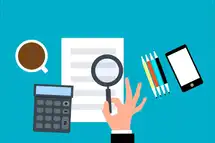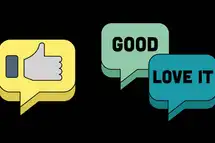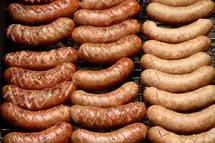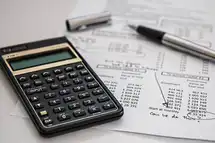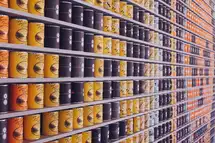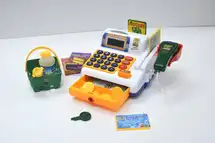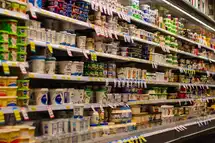What is a sales forecast template?
Sales forecast templates are used to predict future sales revenue. This is done by analyzing past sales data and using it to create a model that can be used to estimate future sales. The accuracy of sales forecasts can vary depending on the quality of the data used and the assumptions made about future conditions.
How to Create a Sales Forecast Template For Projections That Are On Point
What is a Sales Forecast?

A sales forecast essentially is an estimate of anticipated sales revenue. It predicts how many products will be sold by a business over a specified period of time. Sales forecasts may be daily, weekly, monthly, quarterly, and yearly in nature, and offer an idea about what the potential revenue of the business can be.
Sales forecasts rely on different inputs. While some derive inputs from artificial intelligence (AI), others depend on the intuition of sales representatives.
The practice of forecasting sales draws heavily from current and historical data on sales contained in the point of sale (POS) system. It also looks at research findings, customer demand trends, along with seasonal sales data. Additionally, it incorporates demand planning to anticipate and be ready for a sudden increase or decrease in demand as a result of big-ticket events, festivals, harsh weather, or the outbreak of disease.
A business needs to have an idea of the sales volume that may be generated by each unit, whether individual sales reps or a sales team, and, in this regard, an effective sales forecasting software solution comes in handy to accurately forecast sales.
A company, while forecasting sales, needs to factor in the potential buyer and the product it intends to sell them. The per capita income and purchasing power of the target consumer will naturally shape sales forecasting, as will the difference in projected future demand for the items sold by different businesses. So, if surveys show that the consumption of vegan food is set to spike in the near term, a restaurant specializing in vegan fare will have a strong sales forecast.
Forecasts must also consider events and occasions falling within the forecast period, and the weather that is expected to prevail during that time. Therefore, a sales forecast done for October-December will be influenced by big-sales events like Thanksgiving, Christmas, and New Year, but would need to be balanced out by the prospects of a harsh winter.
A sales forecast would also give information on the place where purchase decisions would be made so that it becomes easy for the sales team to be close to the action. The forecast also helps you to understand the reason for customers' interest in your product. For instance, inflation in animal-based protein may impel consumers to look for plant-based alternatives. Forecasts also let businesses identify what factors customers take into account while selecting products. This information can be had through an analysis of past trends.
A Good Sales Forecast Can Determine Your Success
Businesses have a lot to gain from an accurate sales forecast. Here are some of the features of a well-made sales projection-
1. Effective inventory management- Over-purchasing can lead to wastage of food, storage space, and money, while under-purchasing may cause restaurants to turn away their most loyal customers owing to a shortage of ingredients for high-demand dishes. Precise sales forecasts help in inventory optimization and prevent both oversupply and stock-outs, and narrow the gap between expected and actual resource utilization.
2. Making better choices- Sales, revenue, and demand forecasting systems use predictive analytics to guide choices made by businesses. By analyzing past trends, business owners can make crucial decisions on hiring/scheduling workers, expanding/pulling out menu items, modifying menu prices, growing the supplier base, enhancing customer loyalty programs, continuing brick-and-mortar stores, or aggressively tapping into the online ordering market.
3. Improved employee management- By anticipating the right degree of demand, staffing needs can be planned effectively. Accurate sales forecasts allow organizations to schedule the exact number of workers needed per shift to ensure high productivity, while preventing resource wastage. For instance, a restaurant anticipating a fall in order frequency and size during the period before dinner may make do with reduced staff strength and save expenditure on labor.
4. Winning over investors- You need a clear and sufficiently ambitious sales target and a sales forecast that covers a long enough period, say three-five years at the minimum. This would allow you to successfully pitch your business to investors. It is also crucial for your sales pipeline to justify your sales forecast so that the investors are willing to put their money into your business venture.
5. Preparing carefully-planned budgets- Company budgets are fundamentally geared towards profit maximization and cost minimization. Effective demand planning and sales forecasting, and an analysis of the sales pipeline enable entrepreneurs to take necessary actions to lower food and labor expenses, hold on to suppliers offering the greatest benefits, and customers who offer good value. A snapshot of future sales and revenue, as well as expected headwinds or tailwinds that may impede or propel business activity, will allow restaurants to take vital decisions on aspects like store expansion, hiring, supply chain management, and so on.
Inaccurate sales projections can lead to a number of problems for a business.
A sales forecast template can help you avoid these problems and scale up your business quickly.
Steps to Create a Sales Forecast TemplateNo. 1- Monitor Business Data
Sales forecasts need to be placed in proper sales forecasting templates to be properly interpreted.
Tracking business data is the most basic function one needs to execute to forecast sales. Without historical data, you have nothing on which to base your sales projections. If adequate information on past sales is lacking, a process can be set in motion to track sales so that forecasting becomes easy. Monthly sales information that needs to be tracked includes the number of items sold, and the number of units returned or orders canceled, which would give a precise idea of the sales volume. You also need to track the monthly revenue generated by each product, the number of sales reps involved, and the average length of the sales cycle.
These data points can be used in a variety of ways when forecasting sales. For instance, in order to determine the sales run rate of your business, which is the revenue that you expect to generate in the coming year, multiply the revenue you recorded last month by 12. Then modify the figure by taking into account expected headwinds, like marquee events, and tailwinds like seasonal demand sluggishness over the coming 12 months.
In this regard, robust POS, and customer relationship management (CRM) systems, supported by equally strong business intelligence and analytics platforms allow organizations to draw data into the Sales Forecasting template and derive actionable insights from it.
No. 2- Establish Metrics

You need to decide exactly what you will be measuring before launching your calculations, for example, identifying the product for which sales are to be projected. For instance, a restaurant may want to predict the sales of long-standing menu items to decide whether to carry on with them, or predict the demand/sales of new menu offerings.
When making projections, you also need to decide how far you want to go to undertake a Trend Analysis, and how far into the future you want to look.
Moreover, the selling price of your products and the method of measuring your products need to be established. Set the yardsticks to measure them. This would allow revenue to be calculated on the basis of price per unit.
You need to consider the length of your sales cycle too. This refers to the time required to make an average sale, from start to finish. There are monthly sales cycles, quarterly sales cycles, and yearly sales cycles. A sales cycle may be unique to a business based on the product being sold. A sales cycle essentially comprises steps like the generation of leads, determining which of them are most likely to purchase from you, preliminary interaction with potential customers, the extension of an offer, bargaining, and finally, the closing of the deal.
Customer growth vis-a-vis revenue can be gauged even by companies that have just started operations. Such establishments may lack past sales data but can look at data from a business that is roughly similar in size, product mix, targets, technology adoption, and so on.
No. 3- Select a Forecasting Technique
When forecasting sales, you can apply one of two fundamental techniques. While the bottom-up approach begins with your organization and then broadens out, the top-down approach starts with the overall market size and works its way down.
To predict the volume of sales using the bottom-up method, calculate the number of units of an item you are able to sell in a given sales cycle and then multiply it by the average cost of every unit. By including more elements, such as the total number of sales reps involved, you can broaden your analysis. This approach leverages company data to estimate outcomes with greater specificity.
The top-down method essentially looks at how much of the total market you will be able to capture. For example, if you are competing in a big, over-saturated market, you may not be able to grab more than 3% of the market, and if that market is worth $1 billion, the value of your projected sales will be $30 million.
The type of business would determine the most appropriate sales forecasting method. Therefore, an organization that seldom sees its revenues fluctuating, or one that is just starting off, and doesn't exactly have a data pool to draw inferences from, may opt for the top-down approach. The bottom-up approach, on the other hand, may work well for seasonal businesses like ice-cream parlors.
A sales forecast that is off point can lead to a lot of pain for a business owner.
How can I ensure my sales forecast is accurate?
No. 4- Make Data-driven Calculations
To estimate annual sales revenue, first find the total sales volume in the year so far. Divide this figure by the number of months that have already elapsed. This will give you the average monthly sales value. Multiply this by the number of months still left in the year, which will give an estimate of the sales revenue you could generate for the remainder of the year. Add the quantum of sales already achieved with the sales projected for the rest of the year, in order to arrive at your yearly sales forecast.
Let's understand this with an example. Assume that you produce software applications priced at $300/unit, and you were able to sell 400 units in the first three months of the year. This means that you were able to create a revenue of $120,000 from January to March. This can be broken down to a monthly sales figure of $40,000. Your projected sales for the remaining nine months would be $360,000 ($40,000 x 9 months), giving you a total annual sales forecast worth $480,000 ($120,000 + $360,000).
When you are calculating yearly sales values, it is important to remember that the year may not necessarily be a calendar year, but 12-month durations selected according to the object of your exercise. You may also forecast sales for shorter periods. So, you may have quarterly sales forecasts or monthly sales forecasts. You may also have sales forecasts covering a period of more than a year.
You may also forecast sales for the ongoing year by adding the value of inflation to the value of sales from the previous year.
No. 5- Adapt to External Influences
A sales forecast normally works by extrapolating the growth rate of your business from your performance in previous years. However, a sales projection is more than pure mathematics. Sales forecasts are bound to be impacted by external factors that are outside our control. Adverse influences may push the actual sales figures lower than that projected, while favorable factors may exert upward pressure on the sales volumes. In order to make your sales projections more accurate, make room for the factors that may affect your projections positively or negatively.
Accordingly, price inflation is one of the foremost variables to consider while forecasting sales. Inflation oscillates based on the overall state of the economy. An organization has to take inflation into account to ensure that it isn't projecting a sales volume higher or lower than what the economy may allow.
You also need to consider if growing competition will reduce your share of the pie in the market. Furthermore, you must closely monitor changes in the market. For instance, growing health consciousness among consumers may reduce the demand for soft drinks, or the outbreak of diseases like bird flu could depress the demand for poultry products. Restaurants must calibrate their strategies accordingly.
There could be technological changes in the industry that affect sales too. For example, the advent of automatic coffee machines has made coffee brewing quick and convenient. With a faster turnaround time, cafes can produce more cups of coffee for their customers. Sales forecasts would have to be adjusted keeping in mind this changed scenario too.
Apart from these factors, sales projections may also be affected by changes in legislation. So, changes in labor laws, especially those concerning the minimum wage rate and overtime rate may result in an increased labor bill for restaurants. This may cause them to schedule a smaller number of employees than they would have ordinarily, hitting sales in the process.
Restaurants may be affected by seasonality too. Accordingly, restaurants may go half-empty and food deliveries may also take a hit during the winter.
Lastly, something like a pandemic may come totally out of the blue, and flatten the entire food industry. You can't prepare for such once-in-a-century events, and sales projections made before such events need to be suitably modified to reflect the 'new normal'. In the case of the pandemic that we are currently going through, we have seen that sales have tended to depend upon the ability of businesses to embrace tech-enabled dining methods, ranging from online ordering, third-party delivery, curbside pickup, and even the use of food lockers.
Why Zip Forecasting is the Tool For You

The Zip Forecasting solution is a cloud-based, automated sales forecasting and Demand Planning software that comes from the Hubworks stable. It can easily connect with the POS system of a restaurant to produce valuable projections with just a few clicks.
Zip Forecasting enables users to view, interpret, and comprehend information in real time from any location and on any mobile device. With the help of this program, users can forecast sales in intervals of 15, 30, and 60 minutes.
This software solution uses cutting-edge algorithms to automate forecasting using past data. You may choose the time-frame for which you want projections. As guesswork is done away with, sales forecasting becomes highly precise. It also saves a considerable amount of time and effort, which employees can use to attend to customers.
A restaurant will be able to place precise orders, and avoid excess stocks, food wastage, and undersupply by using Zip Forecasting to estimate future sales and demand. The effectiveness of this program increases manifold when used with other Hubworks products like Zip Inventory, Zip Supply Chain, Zip Schedules, and Zip Ordering to improve inventory and supply chain management and optimize staffing. Even weather forecasts are offered by Zip Forecasting to help organizations monitor all the factors that affect the flow of business.
You're in the market for a good sales forecasting software, but you don't know which to go with.
There are so many software options out there, it’s hard to make the right choice.







































































